

Investigating Housing Outcomes
“Using the growth capacity figures obtained by WCC through their
Spatial Plan investigations to understand what types of housing is
required now and in the future”
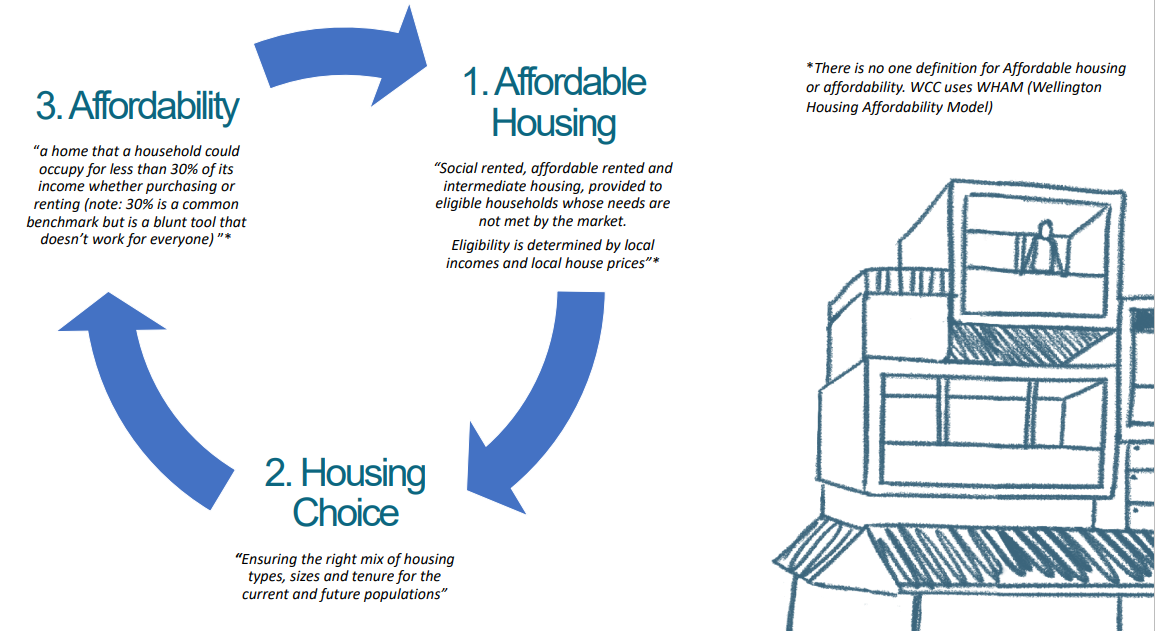 What are housing outcomes?
What are housing outcomes?
3. Relative
Affordability
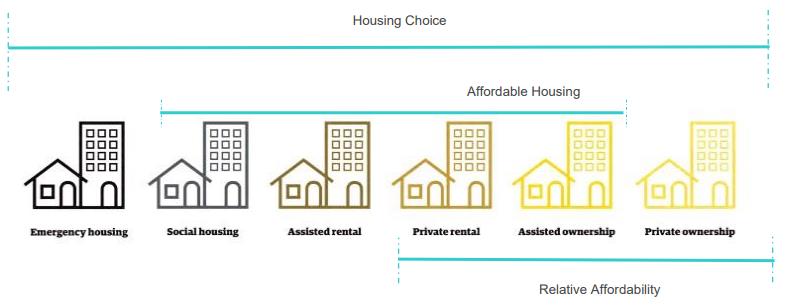 The Housing Spectrum
The Housing Spectrum
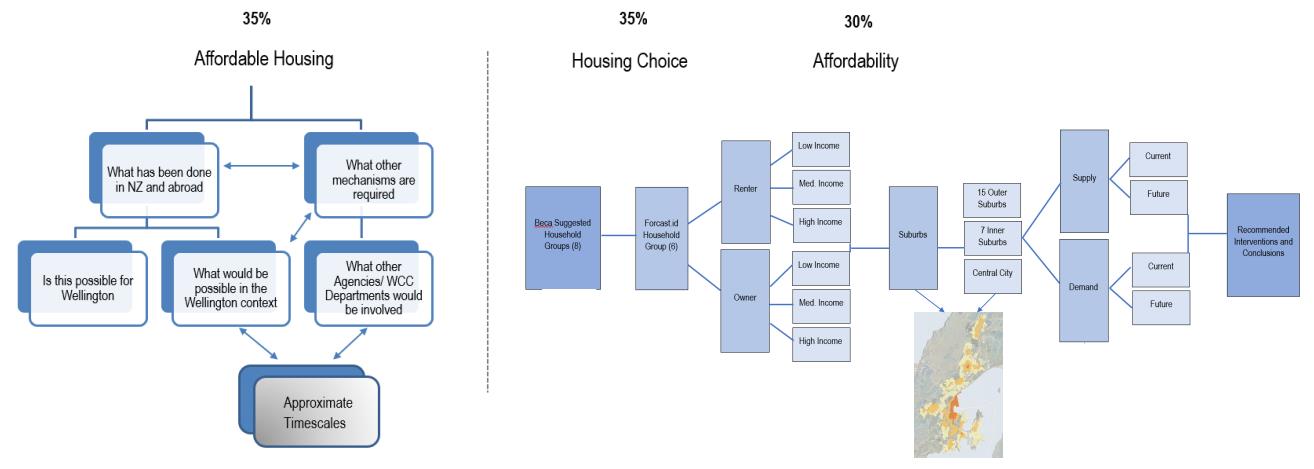

Qualitative Research
Quantitative Research
Relative Affordability and Housing Choice
Draft Spatial Plan
population figures
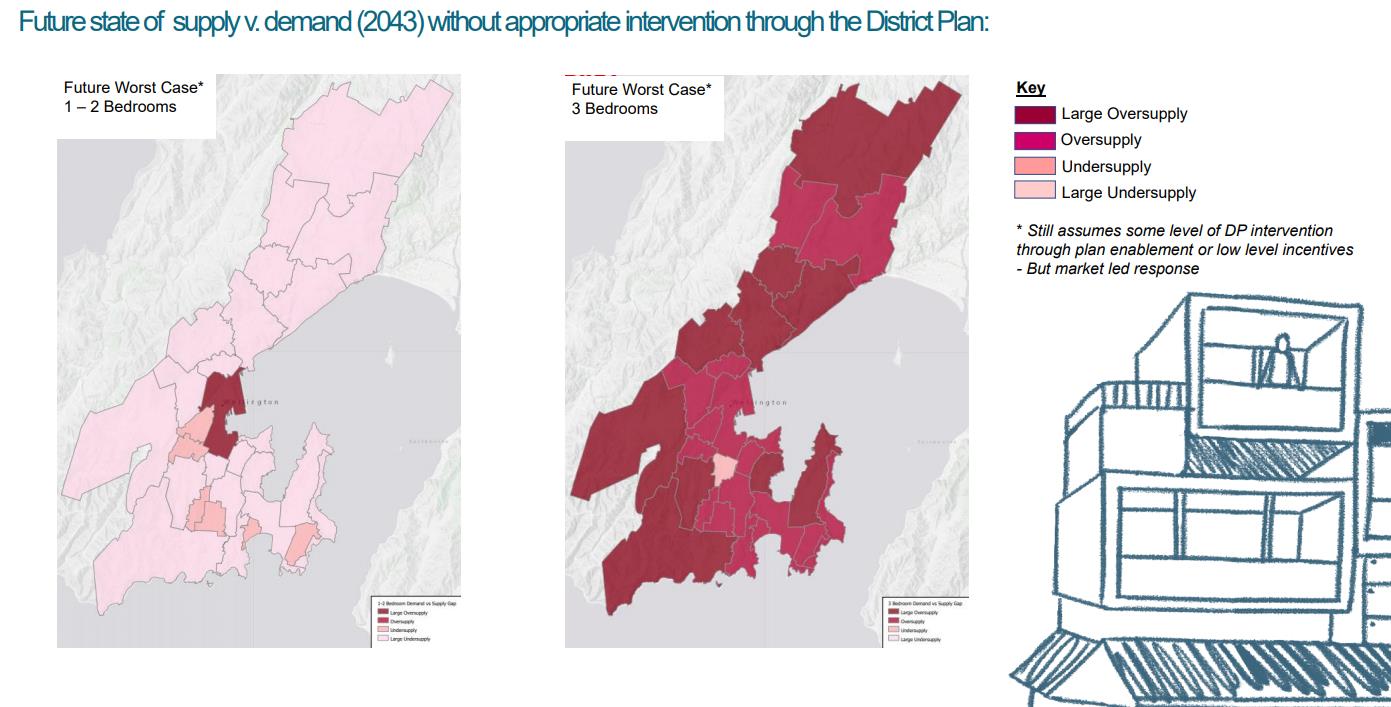
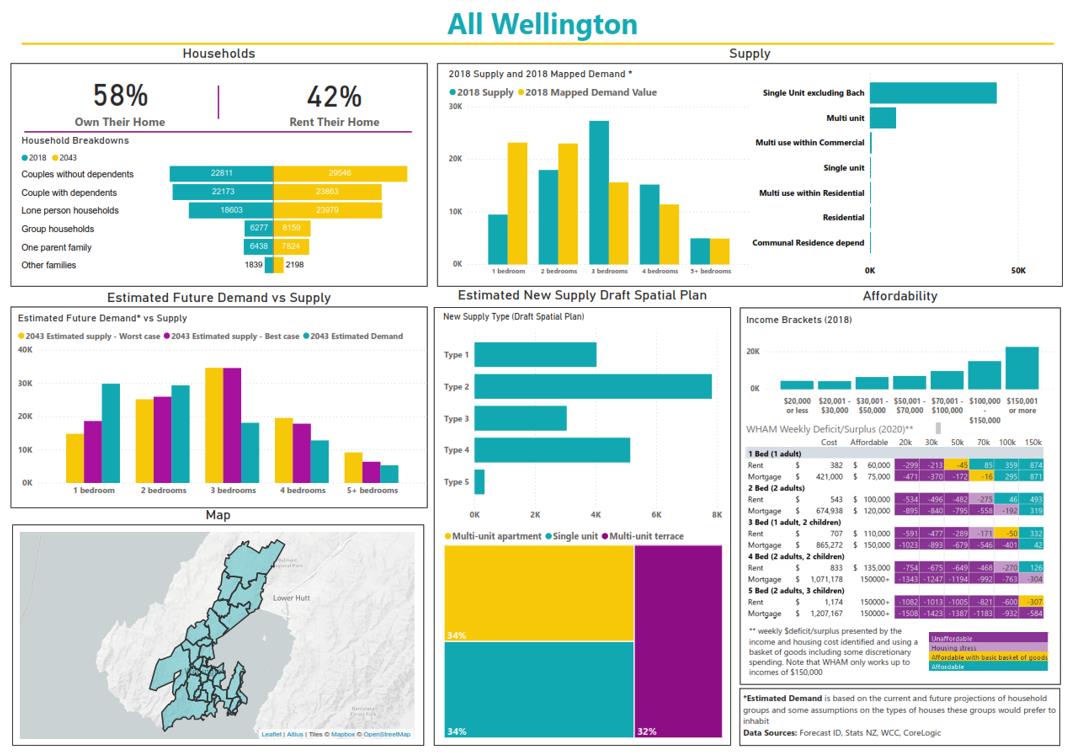







 Key Affordable Housing Findings
Note:
Key Affordable Housing Findings
Note:
• Market-orientated approaches to boosting housing supply have dominated globally
• Some global approaches seek to address housing affordability or social inclusion rather than providing housing exclusively for low income households
• Value capture of zoning (as opposed to a targeted rate to all) can incentivise land banking
•
DP mechanisms can include land zoning, incentivising planning provisions and legislative requirements such as inclusionary zoning. Other
mechanisms sit outside the DP process
• There is a strong case to address affordable housing in Wellington
•
Inclusionary Zoning is contentious in New Zealand. Therefore, it is vital to achieve:
•
organisational buy-in;
•
meaningful community and stakeholder engagement; and
•
A robust evidence base that includes an in-depth analysis of feasibility implications
Auckland unitary Plan Hearings (2013) seen as a “tax” on the supply of dwellings (CHS Discussion Document 2020).
Auckland Council ‘Affordable housing’ reporting advised:
‘not to make any changes to the Auckland Unitary Plan to include Inclusionary Zoning (IZ) but agreed to continue trying to advocate for IZ as part of central
govt legislature change/forthcoming RM reform.’


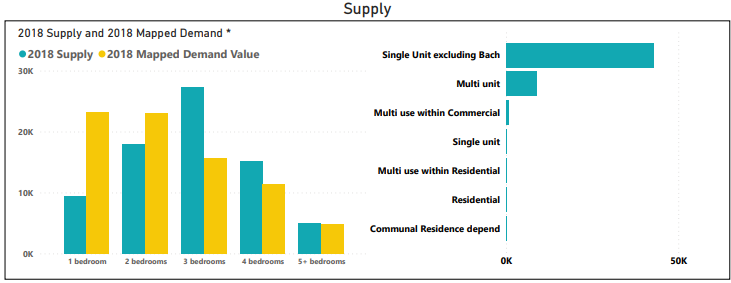
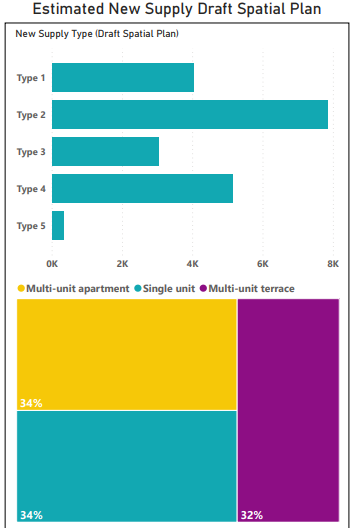 Key Housing Choice and Affordability Findings
Changes in household types:
Key Housing Choice and Affordability Findings
Changes in household types:
• Couples without dependents and lone person households are
increasing in number – indicating
an increase in demand for
1 and 2-bedroom homes.
• At the same time, however, couples with dependents and
group households still make up a significant chunk of
households – so
future development needs to increase
the enablement and provision of number of smaller
households without significantly reducing the availability
of larger homes.
Housing availability:
• Most suburbs have a
noticeable shortfall of 1-bedroom homes, and a smaller but still
evident undersupply of 2-bedroom homes.
• Conversely
most suburbs have an excess of 3-bedroom homes – in many places the
supply is more than double the current demand. In some cases this may force smaller
households to buy or rent larger, more expensive homes than they need due to the lack of
suitable smaller housing and oversupply of 3 bedroom homes. This
not only increases the
portion of their income that these groups will need to spend on housing, but is an
inefficient use of housing in cases where people are renting / buying homes with more
bedrooms than there are people (e.g. more household income being spent to access
housing that isn’t wel -matched to housing need).
• Supply of 4 and 5-bedroom homes seem more closely matched to demand in most places.

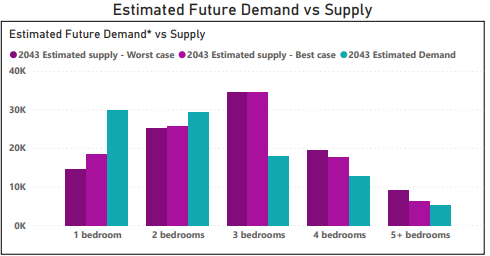
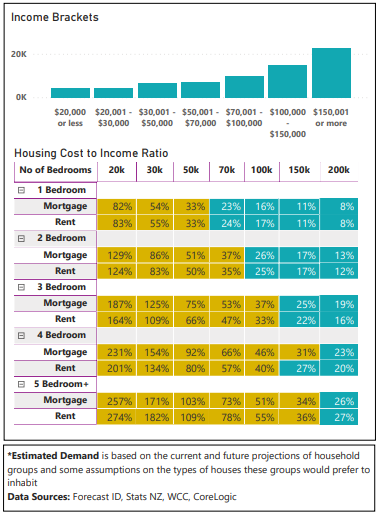 Key Housing Choice and Affordability Findings (cont.)
Housing availability (cont.):
Key Housing Choice and Affordability Findings (cont.)
Housing availability (cont.):
• These trends are expected to be similar in 2043, although the potential gap between supply and demand
is typically projected to decrease somewhat.
• If the recommendations of the Draft Spatial Plan are implemented, the majority of new builds will likely be
terraced housing and multi-unit dwellings, which has the potential to increase the proportion of smaller
houses available in the local market. However,
the best-case scenario supply projections for each
suburb are typically still not enough to match the projected demand for 1-2 bedroom houses.
Affordability:
• Housing affordability is fairly similar for renters and homeowners, although mortgage payments are typically slightly more
affordable (by between 5-10%) than rent for 1 and 2 bedroom homes.
•
In almost all suburbs, all housing types / sizes are typically unaffordable for households earning less than $50,000,
and are only affordable for households earning more than $100,000.
•
The private housing market is unaffordable for those households earning less than $30,000 – spending upwards of
80% of income on a 1 bed home and most larger homes are over 100% of their income. There is a need to ensure that
not only are more smaller houses being built to provide more affordable living choices, but also that housing costs become
more affordable across all household sizes.
• Affordability of 3-bedroom homes is not substantially cheaper than other sized homes, despite there being such an
oversupply of 3-bed homes in most suburbs. This could be because 3-bed homes are currently being rented to those who
may otherwise be looking for 1 or 2-bedroom homes which better match their need.
Increasing the number of smaller
homes may better match supply to need, and help ease the pressure of an unnecessary overspend of household
income to access living choices that are larger and more costly than what a household actually requires.
• In some neighbourhoods housing is particularly unaffordable – e.g. in Aro Valley even 1-bedroom homes are only considered
‘af ordable’ (as a proportion of income) for those earning over $70,000, while 2-bedroom homes are affordable for those
households earning over $100k.
Proposed Response – Potential ‘System Approach’
Creation and establishment of an integrated ‘system approach’ that utilises a series of inter-connected interventions to plan and fund a
sustained delivery of housing outcomes.
1
2
3
4
5
6
Achieving &
Role of WRGF?
Sustaining a
Land Supply/
Strategy &
Funding &
Commitment &
Education &
‘System
Rezoning
Governance
Partnerships
Leadership
Awareness
Approach’
•
Use Spatial Plan & DP
•
Consider the creation of
•
Engaging with Central
•
WCC taking leading role
•
Focused and dedicated
•
Establishing a series of
review to enable
a similar approach &
Government on
in delivery of AH
effort to make
step changes / direct
DP
sufficient rezoning to
structure to that
additional tools/ options
•
Investigate options to
communities aware of
interventions – based off
Non DP
provide opportunities for
established by QLDC
to support AH
use WCC owned land for
AH options and
previous steps – to
Processes
mechanisms
a wide mix of housing
•
Build upon existing WCC
•
Investigating alternative
the delivery of exemplary
opportunities in the city
create an integrated
types and sizes
‘Housing Taskforce’
funding tools (e.g. tax
AH projects
•
Potential for WCC to
system for the planning,
•
Prepare DP provisions
•
Evaluation of existing
reform/ land value tax,
•
Potential expansion of
provide direct assistance
implementation, funding
that enable/ require/
WCC Housing Strategy to
land value capture, DC’s,
WCC existing function/
to individuals navigating
and delivery of AH that
promote a variety of
assist in the delivery of
Financial contributions
role of providing social
the process of applying
can be sustained into the
housing types and sizes
AH in Wellington
to assist in the delivery
housing to also
for/ accessing AH
future.
•
Consider use of specific
•
On-going & regular
of AH
incorporate AH
provisions/ approaches
review of process
•
Building relationships
through DP review to
•
Connect with wider
with key partners (e.g.
achieve AH outcomes
WRGF regional housing
CHP, iwi)
work and approaches
10


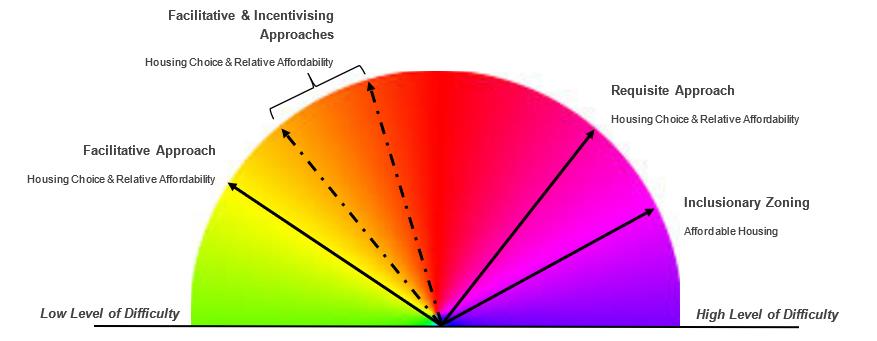 Potential District Plan Intervention Approaches
Potential District Plan Intervention Approaches
 Next Steps – What to investigate further
Next Steps – What to investigate further
1.
WCC should investigate organisational appetite and confirm a clear direction for addressing housing outcomes. Each may require different DP responses
(and other mechanisms), although there may be some overlap.
The following questions should be answered:
a. What are we trying to achieve
• Social inclusion
• Relative affordability
• Racial and economic diversity in
neighbourhoods
• Housing choice
• Strengthened family units
• Promote balanced growth
• Affordable housing
• High quality housing that
• Linking housing to essential supportive
contributes to carbon zero goals
services
b. Who are we trying to help
• Low income households
• Disabled people
• LGBTQI+
• Māori & Pasifika
• Young people and students
• Key workers
• Other minority groups
• First time buyers
• Family violence survivors
• Older people
• Renters
• Refugees and migrants
c. How many / what type of DP interventions / mechanisms does this require?
d. Does it have an enduring role?
• Retained affordability - What other mechanisms would we need to have in place?
2. Answers above should be used to guide a selection of choices and process/ funding overlaps identified
3. Feasibility investigations should be progressed to support any proposed requirements within the proposed DP. This process will require consultation with
stakeholders (e.g. developers and CHP’s)
4. Early assimilation of housing outcome intentions with the community should be undertaken – Ideally would tie in with the District Plan Review.


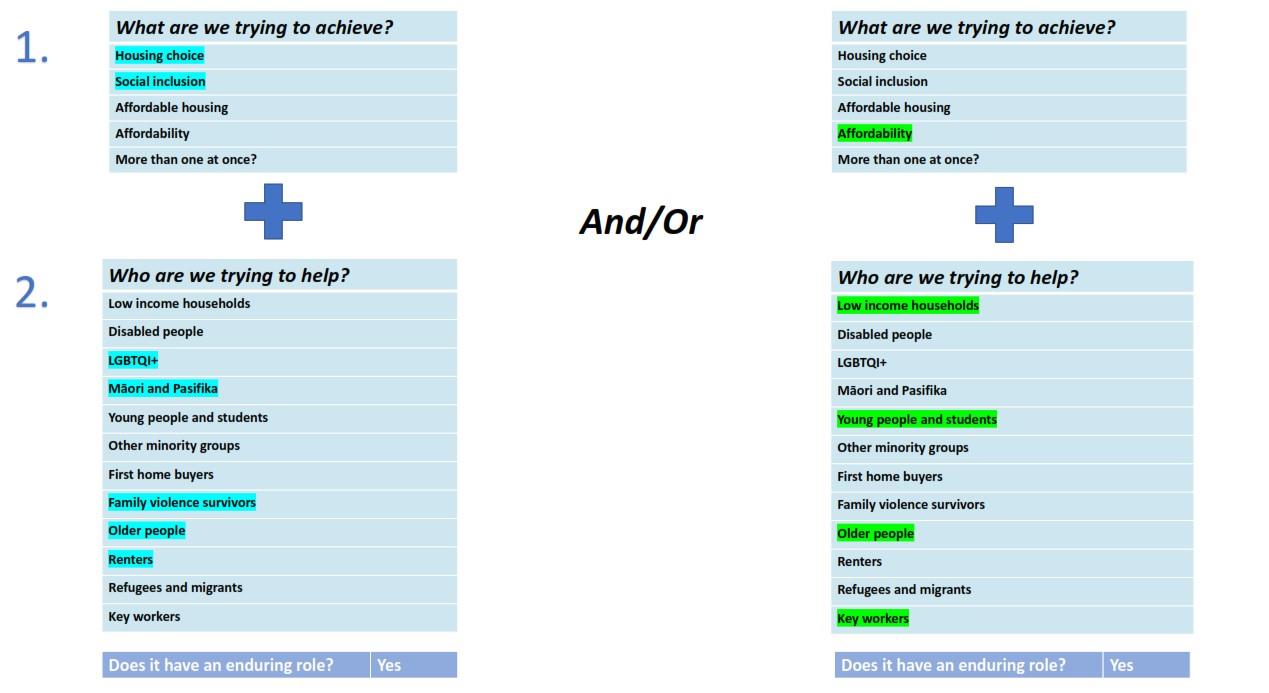 How different desired outcomes have overlap
How different desired outcomes have overlap
a.
What are we trying to achieve
And / Or
• Social inclusion
• Relative affordability
• Racial and economic diversity
in neighbourhoods
• Housing choice
• Strengthened family units
• Promote balanced growth
• Affordable housing
• High quality housing that
• Linking housing to essential
contributes to carbon zero goals
supportive services
b. Who are we trying to help
• Low income
• Disabled people
• LGBTQI+
• Low income
• Disabled people
• LGBTQI+
households
households
• Māori & Pasifika
• Young people and
• Key workers
• Māori & Pasifika
• Young people and
• Key workers
students
students
• Other minority
• First time buyers
• Family violence
• Other minority
• First time buyers
• Family violence
groups
survivors
groups
survivors
• Older people
• Renters
• Refugees and
• Older people
• Renters
• Refugees and migrants
migrants
Does it have an enduring role?
Yes
Does it have an enduring role?
Yes

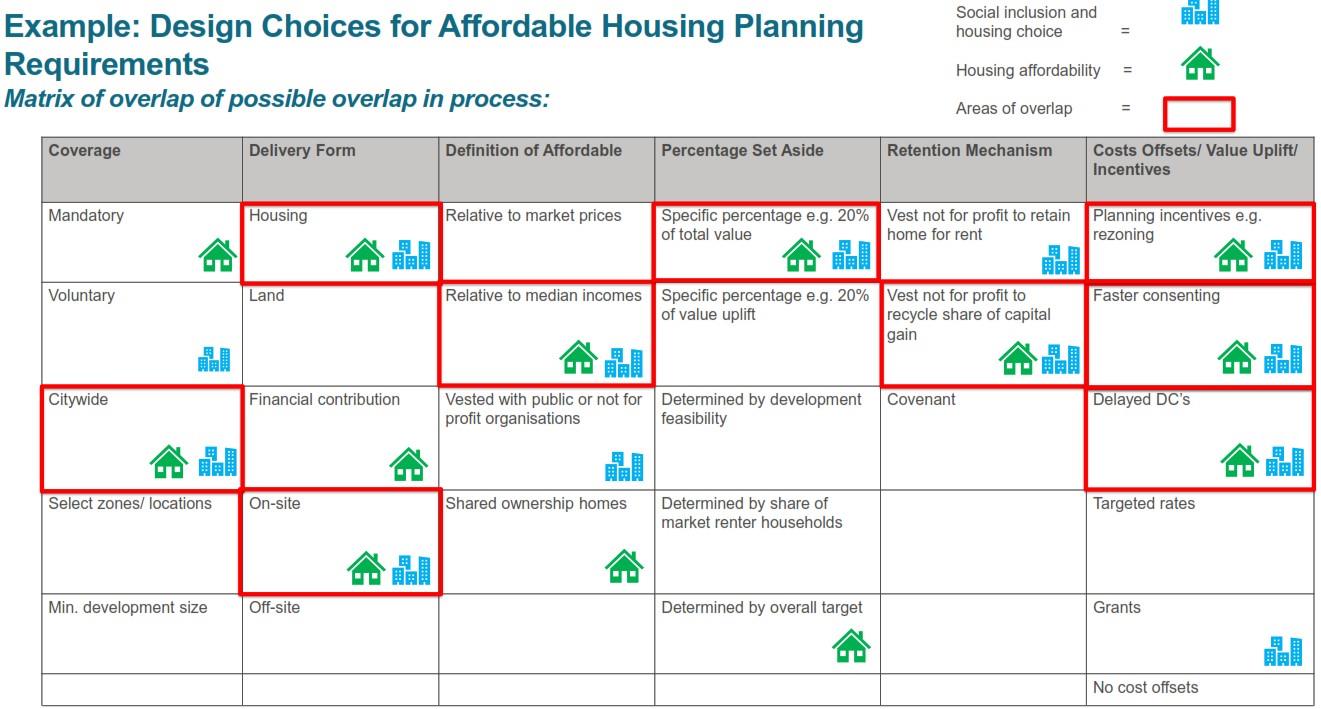
 Beca – Proposed Roadmap of Next Steps
Beca – Proposed Roadmap of Next Steps




































